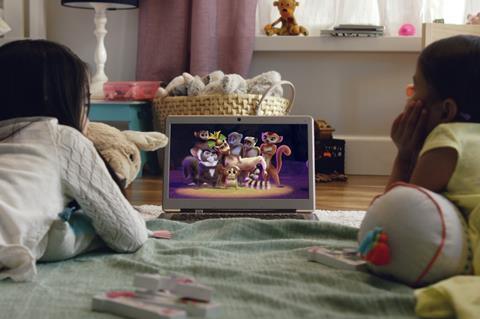From telephone interviews to return path data from set-top boxes and tablets, the methods used to assess who is watching what have evolved with people’s viewing habits.

Nielsen Media Research’s recent announcement of the tracking of SVoD services such as Netflix as part of its Nielsen Media Impact service, and BARB’s roll out of Project Dovetail have generated a great deal of focus on the methods used to determine just how many people are watching or listening to programmes.
In an industry still largely supported by advertising, broadcasters live and die by ratings. The problem is, it’s never been an exact science.
John Wanamaker the US department-store magnate, and marketing pioneer has been quoted as saying, “Half the money I spend on advertising is wasted; the trouble is, I don’t know which half.”
The provenance of this quote is questionable, as is its accuracy, however the fact that it is still being quoted shows the level of insecurity that exits in the business.
Broadcasters want to ensure that they have an attractive offer for advertisers who want to get the most “bang for the buck.”
Broadcasters, publishers, and advertisers have long been searching for a technology that will serve as a magic bullet to provide certainty as to the effectiveness of their reach and impact. The advertising industry has moved from a quest for readers, to listeners, to viewers, and now “eyeballs,” but in the end, it’s all about who’s paying attention to what and when they’re paying attention to it.
Early measurement
It’s worth taking a look at the history of audience measurement methods, as the technologies of the day have always played a major role.
It’s generally thought that the earliest broadcast rating surveys were done via pen and paper – using listening diaries.
In fact, the first surveys were done using electronic technology: one of the earliest national ratings services was the Cooperative Analysis of Broadcasting (CAB), launched in 1930 using the most advanced technology of the day – the telephone.
Random households considered to be a representative sample of the listening audience were contacted by phone and asked questions about what radio programmes had been listened to during specific times of the day.
This type of survey began to be refined by the C.E. Hooper Company, who shifted the focus of the calls to real-time information on what was being listened to when the call was made. This information was more valuable to broadcasters and advertisers, so Hooper began to dominate the market.
More advanced technology came into play in the late 1940s when the A.C. Nielsen company developed a meter to be attached to a radio that would automatically record listening information when the set was turned on.
Nielsen adapted this technology to television sets, and in this way eclipsed Hooper, becoming the market leader in ratings services. By the 1960s, this survey data began to be analysed by computer, and combined with socio-economic data that enabled advertisers to selectively target television and radio audiences in a way similar to magazine publishing. The data from the automatic devices was matched with viewing diaries kept by the survey households to provide more comprehensive data on viewership.
Truly real-time ratings were introduced in Sao Paulo by the Brazilian Institute of Public Opinion and Statistics (IBOPE). The institute’s “peoplemeter” communicated over the mobile phone network to a central server which analysed the data and distributed it to its customers.

Shift to digital
Because the metering technologies used by companies like Audits of Great Britain, Nielsen, Arbitron, IBOPE, relied on identifying the VHF or UHF frequencies of the channels being watched, the introduction of home satellite and digital television required a new approach.
The first step was to develop a system that identified a programme through tones encoded in the audio signal of a programme. This approach was enhanced in the 2000s when Arbitron in the US introduced the “portable people meter,” (PPM).
A central meter was installed in a home, and each family member was given a battery powered PPM to attach to their clothing. The PPM communicated wirelessly back to the meter, which transmitted the viewing data back to Arbitron’s servers. This system help to address the challenge of monitoring the viewing habits of “multi-screen” families.
An immediate consequence of the use of the PPM’s empirical data was to highlight discrepancies between the electronic monitoring data and the activities survey respondents recorded in their viewing diaries.
There is anecdotal evidence that respondents used the diary entries to present aspirational representations of their viewing habits as opposed to what they actually were watching.
The move online
Even in the nascent days of the Web, content creators were keenly interested in how many eyeballs they were attracting. As early as 1995, the Internet Audit Bureau was launched. The IAB provided webmasters with a bit of code to embed in the HTML of individual web pages.
Every page view was registered by the IABs’ servers. The ambition was to provide a trusted, audited source of data on reach. In a somewhat prescient move, Nielsen acquired the IAB in 1996.
The next push into online media metrics was driven, ironically, not by commerce, but by theft.
The company Big Champagne was founded in 2000 and provided a service that tracked the popularity of music, with their primary source of data being generated by the illegal downloads of music from platforms like Napster and Kazaa.
Radio stations used Big Champagne’s data to help them create their playlists, record labels used the information to decide what artists to sign and how to promote music online, and even Led Zeppelin used Big Champagne’s data to create the song lists for their 2007 reunion performances. As online music consumption has gradually become legitimate, so have Big Champagne’s data sources.
They now monitor activity on YouTube, iTunes, Facebook, Twitter, Instagram, and more. They provide what they call “Ultimate 100” charts, compiled from data sources across all forms of distribution: online, broadcast, sales, concerts, and more. In 2011, the company was acquired by LiveNation.
In the UK, the Broadcasters’ Audience Research Board (BARB) has made major steps toward monitoring audience numbers across a variety of platforms and devices. The company uses the traditional approach of surveying a representative selection of the population, combined with empirical data generated via monitoring devices on televisions, and software installed on computers and tablets. In 2014, BARB began providing data on viewing on tablets, and is in the midst of rolling out Project Dovetail to contend with fragmented viewing habits.
According to BARB, the deliverables of the project are:
- Generate census data for online TV viewing: BARB achieves this through software code that’s embedded in TV player apps used by viewers. Over 30 different platforms have implemented this software and been audited by ABC to ensure the data meets BARB’s standards. The results are reported each week in The TV Player Report.
- Determine how people watch on personal computers, tablets and smartphones: Software meters are installed on the personal computers and tablets of our panel members. These software meters deliver information about what has been watched on these devices and who was watching. Currently, over half of eligible homes on the panel have these software meters installed; we are exploring how this might also be installed on our panel members’ smartphones.
- Establish a fusion methodology: Dovetail Fusion will blend the data generated in the previous two steps. Kantar Media was appointed to deliver Dovetail Fusion on February 2017. It’s scheduled to launch in March 2018.
- Work with return path data: Set-top box data offers similar benefits to the online TV viewing census data that BARB is collecting. BARB has conducted successful pilot projects with data from Sky homes and expects to start further pilot projects in 2017.
Nielsen first entered this space in 2015 with its “Total Audience Measurement” offering that addressed viewing across linear, time shifted, and for the first time, VoD. When viewing was monitored in this fashsion, Nielsen made some interesting discoveries for US viewing:
- 45% of the episode’s audience watched during its live airing
- An additional 32% watched it via DVR during the first seven days after it aired
- 2% watched on DVR between 8 days and 35 days after it aired
- 7% of the audience watched it on VOD from within 35 days
- 6% watched via a connected TV device
- 8% watched digitally, streaming it on a PC, mobile device or tablet
As these processes become automated, and more use is made of the return path, it will become possible to accurately track all viewing, not simply extrapolate from a representative sample.
At the same time, the importance of ratings is changing. Netflix famously does not report viewer numbers.
“Ratings and reporting on ratings are an important part of the industry, but the focus of ratings has no importance to us,” Ted Sarandos, the Chief Content Officer of Netflix, said at a press event in 2016.
Netflix does not rely on advertising revenue and therefore looks at different metrics to determine success, such as conversation in social media, and relying on the network effect to bring on new subscribers. “We’re much more interested in creating conversation surrounding our shows than anything else, and bringing that type of original programming to subscribers,” Sarandos said. “If you subscribe to Netflix and you tell your friend, they’ll subscribe to Netflix. If we don’t make good programming, and you don’t recommend it, people don’t join or they leave.”
























No comments yet